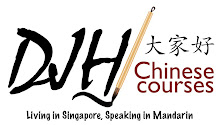
Pin Yin is always the first thing our students learn. It is the key to good pronunciation of Mandarin. Here is a very good website to practice your Pin Yin pronunciation.
Pinyin, or more formally Hanyu Pinyin, is the most commonly used Romanization system for Standard Mandarin. Hanyu means the Chinese language, and pinyin means "phonetics", or more literally, "spelling sound" or "spelled sound".Developed by a government committee in the People's Republic of China (PRC), the system was initially approved by the Chinese government on February 11, 1958.The International Organization for Standardization adopted pinyin as the international standard in 1982,[3] and since then it has been adopted by many other organizations. Since January 1, 2009, it is also the official romanization system in Taiwan (Republic of China, ROC).It is used to teach Chinese schoolchildren and foreign learners the standard pronunciation of Mandarin Chinese, to spell Chinese names in foreign publications and to enter Chinese characters (hanzi) on computers and cellphones.
(Wikipedia)




























